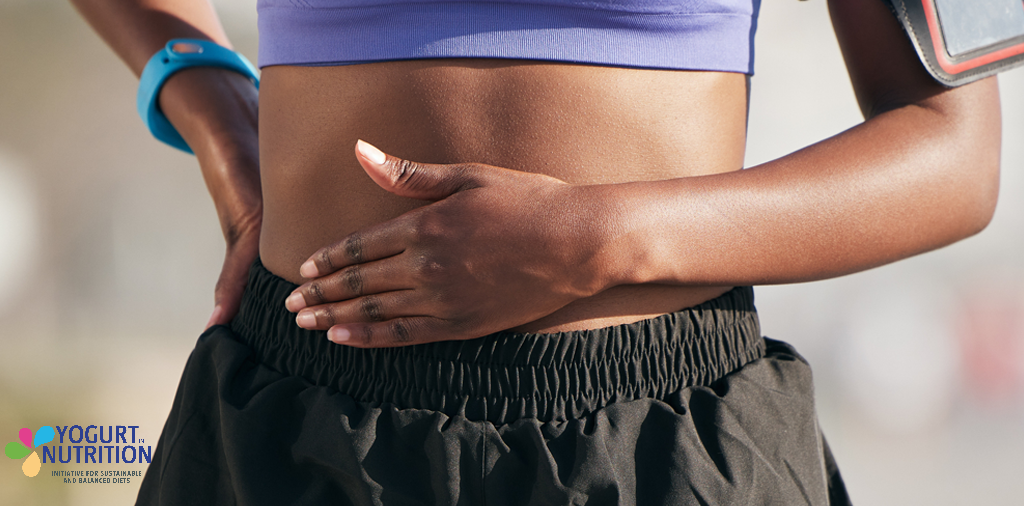A new study has shed light on the link between the gut microbiome and athletic performance. The research has revealed that athletes have their own microbiome “signature”, and indicates that certain microbiome features are associated with improved physical prowess [1] .
By unlocking the secrets of the microbial world within the gut, such research may pave the way towards innovative approaches that harness the relationship between microbiome and physiological function. It could lead to changes in sport nutrition and performance enhancement.
The gut microbiota – a community of little helpers
How well people perform as athletes profoundly depends on what’s happening on a microscopic scale in the gut. That’s because each one of us is a walking ecosystem of human cells and gut microbial cells working symbiotically to determine our health and wellbeing. Among the metabolites produced by the community of 10-100 trillion gut microbes are short-chain fatty acids (SCFAs) [2] that contribute to gut homeostasis, modulate the immune system, and even influence brain function [3].
But the microbiome is a sensitive community, influenced by diet, age, stress, illness, and certain drug treatments [3,4,5]. And recent studies have shown that physical exercise is another influencer, enhancing the diversity and composition of the gut microbiome [6]. The evidence suggests that microbiome activity is linked to sports performance [7].
The characteristics of an athlete’s microbiome depend on their type of sport, previous research has suggested. Endurance training, such as marathon-running, increases the production of SCFAs – an advantage during prolonged activity as they contribute to energy maintenance – and to an abundance of microbiota species with anti-inflammatory properties. On the other hand, the microbial profile in strength-based sports enhances protein use to support muscle development and performance [8].
These findings have raised the question of whether each athlete’s abilities could be optimised by changing microbiome composition for targeted improvements in performance.
Identifying exercise-induced microbiome changes
Delving deeper into this possibility, the researchers compared changes in the microbiomes before and after exercise in three groups of healthy people: two athletic populations – strength athletes and endurance athletes – and a non-athletic but physically active control group [1]. The athletes were not competing at a professional level.
Each of the three groups performed two exercise bouts, separated by a 2-week period, to assess:
- explosive and high intensity fitness using a repeated 30-second all-out activity on a cycle ergometer
- cardiorespiratory fitness using a treadmill
Physical fitness is linked to improved microbiome diversity
Results showed that at the start of the study, the endurance, strength and control groups shared some common features in the microbiome, including similar levels of diversity and proportions of phyla – as could be expected for people who are fit and healthy. But one-third of the species identified were unique to each group.
Following exercise, all three groups showed changes in the microbiome profiles, with physical fitness improving microbial diversity. In this study, no marked differences emerged between the control, strength and endurance groups – probably because they were all similarly active, but not training on a professional level, the researchers say.
Longitudinal samples – taken pre- and post-exercise – revealed an abundance of Alistipes communis in the strength athletes during the high intensity fitness test. During the cardiorespiratory fitness test, 88 species showed differences between the three groups.
Among the bacterial species consistently found throughout the study, there were enhancements in two species that are short chain fatty acid producers, Bifidobacterium longum and Bifidobacterium adolescentis. These two probiotic species, which are commonly found in commercial products, both correlated with improvements in all the fitness parameters measured, especially cardiorespiratory fitness (measured as VO2max during the treadmill test).
Other bacterial types that were linked with higher VO2max included species associated with improved glucose metabolism.
“We were particularly excited to see an enrichment of indigestible carbohydrate degrading bacteria in the endurance group, thereby suggesting performance-specific adaptations.” – Humińska-Lisowska K et al., 2024
Further research
The study confirmed that taking exercise can be a hallmark of microbiome diversity, which in turn is an indicator of general good health, the researchers concluded.
However, they saw various individual responses, suggesting there may be many confounding factors. Hence their results highlight the intricate relationship between different forms of physical activity and expression of gut microbiota. To investigate this relationship further, the researchers recommended further studies to identify sport-specific microbiomes could include elite athletes who would be adapted to different aerobic or anaerobic activities, the researchers said.
“… Physical activity may be a hallmark of microbiome diversity, which correlates with general health and homeostasis maintenance.” – – Humińska-Lisowska K et al., 2024
Additional references



